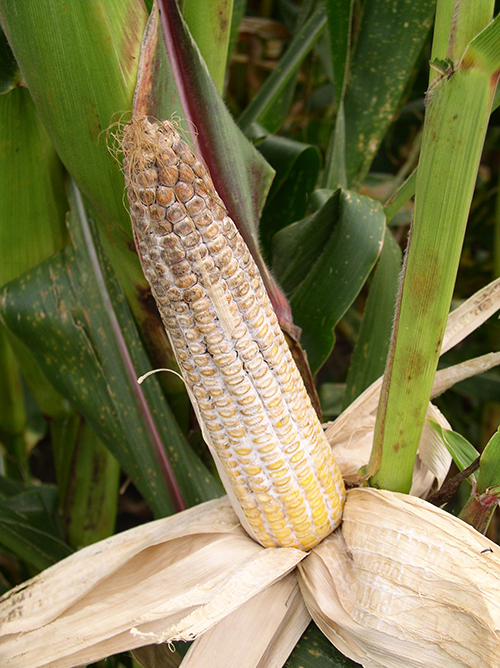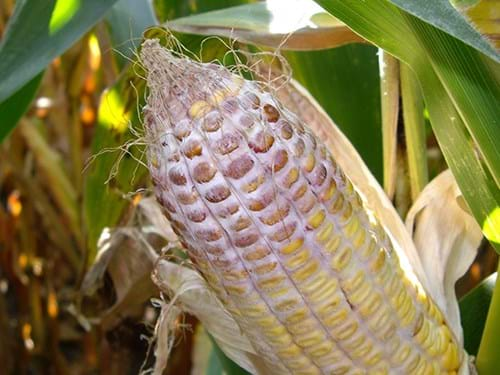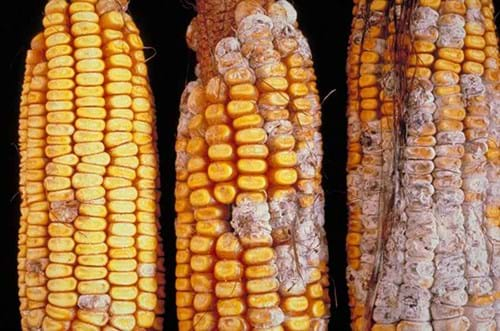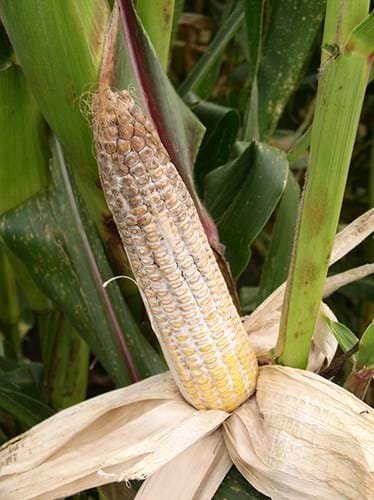Agronomy Update: Fall 2020 Watch-outs
BY DAIRYLAND SEED AGRONOMY TEAM
CONTINUE SCOUTING THROUGH HARVEST
Weather systems have been rolling through the Midwest delivering rounds of rain, snow and wind during the past couple weeks. Though it is only the week of Halloween, not late in the harvest season by Midwest standards, we need to stay prudent about choosing the sequence in which we harvest fields.
The growing season was good to our crops with favorable grain drydown, giving many producers a good jump on harvest activities. We have touched on these topics in greater detail in previous newsletters this season, but now we need to focus on getting soybeans out of the field and keeping an eye out for stalk and ear issues that might continue to creep in on corn.
Most importantly, communicate with your team. Scouting crops gives real time information, but conversations with your seed supplier can provide wider scale perspective and help focus your efforts. We hope that harvest continues to move along at the pace we have experienced so far in 2020. Do not hesitate to contact us at Dairyland Seed with any questions or concerns.
CORN EAR MOLDS: IN 2020?
We are well into harvest, and thus far reports of ear molds have been sparse. That is certainly good news. However, there have been a few isolated reports. Given that, and the fact that there is much corn still in the field, we’ll offer a few notes on ear molds.
There are three main molds of concern, and a few “lesser molds”. The three are gibberella, fusarium, and diplodia. Less frequently seen molds include penicillium, aspergillus, and trichoderma. For today I’ll address the main culprits.
Gibberella: This mold is typically found on the tip ends of ears. It begins whitish in color and quickly develops a pink, even light red, appearance. This is in some ways the most serious ear mold in the upper corn belt as it produces DON, or vomitoxin, which is a severe problem for feeding to hogs. It is favored by cooler, wet weather soon after pollination and in the late grain fill period.


Gibberella: Photo courtesy of Crop Protection Network
Fusarium: This mold can be found anywhere along the ear, and often in multiple spots on a given ear. It is white to gray in color. One telltale sign is the white “starburst” pattern – think of taking a droplet of white ink and throwing it onto the end of a kernel so it splatters outward. Fusarium can produce fumonisins – mycotoxins which are especially dangerous for horses. This mold is favored by warmer temperatures and high moisture soon after pollination.

Fusarium: Photo courtesy of PestNet.org
Diplodia: This is often the worst looking of the three molds – it is an ugly gray-white, usually begins at the base of the ear and often completely envelops the ear. Sometimes the husk adheres tightly to the ear, and, when torn back, reveals a completely useless ear of gray-white kernels. This mold is not known to produce any toxins. Thus, the damage it does is in yield loss and sometimes off-color damaged kernels mixed in with good corn.

Diplodia: Photo courtesy of Crop Protection Network
All three molds begin when spores, wind-borne or rain-splashed, find entry into the ear, usually at the tip and usually soon after pollination. Over time, weather conditions are largely responsible for the development or lack thereof of mold. Generally, diplodia is favored by warm weather, gibberella by cooler weather, and fusarium manages to thrive regardless of temperature if moisture conditions are right. All three molds are favored by moisture – foggy mornings in August or September, and higher than normal amounts of rainfall.
By now you have likely scouted most of your remaining fields to harvest and thus have an idea whether or not you have any ear molds. If you do have mold, try to identify the kind of mold. If it is in low levels, you can probably safely store the grain, but do make sure to dry it well, perhaps to about 14% moisture. If you have high levels of mold, you may want to target that grain for immediate delivery rather than storing it on farm.
Corteva Technology Use Agreements
All growers with orders for any Corteva Agriscience brand seed product, regardless of crop or trait (including non-GM products) need to have a signed Corteva Technology Use Agreement in place by September 1. Growers should sign the Corteva Technology Use Agreement electronically at www.agcelerate.com. Signing electronically is preferable, however, paper copies are available at www.traitstewardship.com.
 |
 |
 |
 |
 |
| Brian Weller Western Region 507.456.3034 |
Dan Ritter Central Region 219.863.0583 |
Branden Furseth Northern Region 608.513.4265 |
Rod King Eastern Region 574.596.6721 |
Terry Jones Eastern Region 419.630.3115 |
